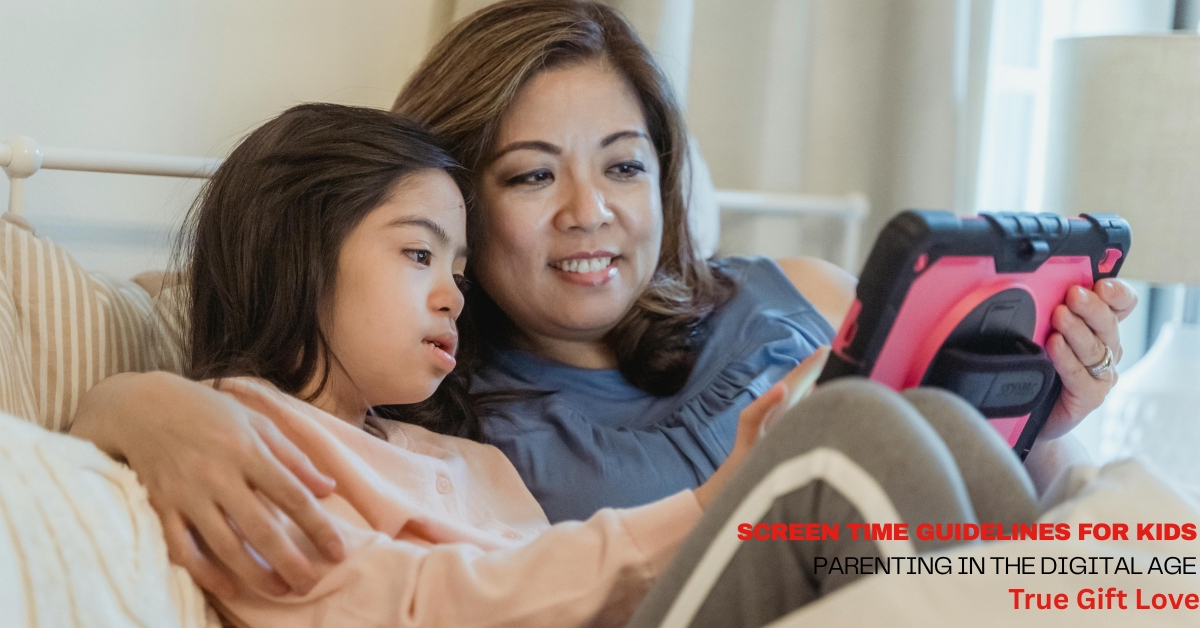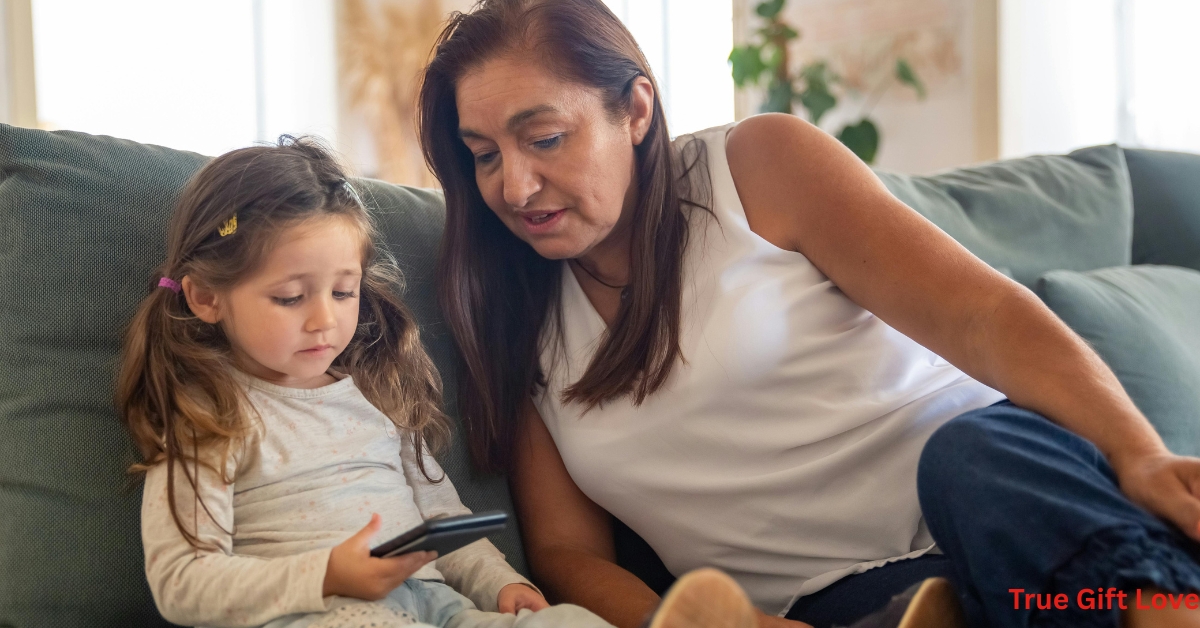Introduction
Technology is everywhere. From classrooms to bedrooms, screens have become part of our children’s daily lives. While digital tools offer incredible opportunities for learning and creativity, too much screen time can lead to sleep problems, poor social connections, and reduced family bonding. As modern parents, we face a big challenge: how do we balance screen time for kids with family time, healthy habits, and real-world experiences?
This guide will explore parenting in the digital age, offering research-backed advice, practical strategies, and family-friendly activities to create a balanced approach to technology.
Why Screen Time Matters for Kids
Screens are not the enemy — they’re tools. But without boundaries, kids may develop unhealthy habits. According to pediatric guidelines, young children require sufficient sleep, face-to-face interactions, and outdoor play. Too much passive screen use often takes away from these essentials.

Signs that your child may need better screen time management include:
- Struggling with sleep routines
- Less interest in hobbies or physical activities
- Difficulty focusing on schoolwork
- Irritable when asked to turn off devices
Parenting in the Digital Age: The Balancing Act
Parenting today is different from what it was even a decade ago. Phones, tablets, and social media have changed how kids learn, socialize, and entertain themselves. This shift has created the need for digital parenting strategies that promote both safety and balance.
Here are three core principles:
- Model Healthy Behavior – Children learn by observing. If parents scroll endlessly at the dinner table, kids will mimic that.
- Open Conversations – Talk about your choices. Share why you sometimes struggle with tech balance and how you try to fix it.
- Consistency – Screen rules should be clear, predictable, and followed by everyone in the family.
Screen Time Guidelines for Kids
Experts recommend different screen time guidelines for children based on age:
- Toddlers (under 2 years): Avoid except for video calls with family.
- Preschoolers (2–5 years): 1 hour per day of high-quality content, co-watched with parents.
- School-age children (6–12 years): Consistent limits, balanced with homework, play, and sleep.
- Teens (13+): Encourage mindful use, prioritize meaningful online activities, and promote digital citizenship.
👉 These aren’t strict rules but flexible frameworks. Every child is different, so focus on balance rather than perfection.
Practical Parenting Tips for the Digital Age
Here are some proven parenting tips for digital age families:

- Create Family Media Agreements – Set clear rules for screen use, like no devices at the dinner table or bedtime.
- Identify Screen-Free Zones – Bedrooms, bathrooms, and family meals should be device-free areas.
- Differentiate Weekdays vs. Weekends – Allow a little extra screen time on weekends, but keep school nights consistent.
- Encourage Active Use – Choose apps or games that promote creativity, problem-solving, and learning instead of passive scrolling.
How to Reduce Screen Time for Kids
Struggling to cut back? Try these strategies:
- Substitute Activities – Suggest board games, outdoor play, or creative hobbies.
- Set Timers – Use built-in parental controls to set daily limits.
- Join In – Watch or play with your kids so screen time feels like bonding time.
- Reward System – More screen time after homework, chores, or outdoor play.
These small shifts help kids see screens as one part of their day, not the whole day.
Healthy Screen Time Habits for Children
Building habits early is key. Encourage your kids to:
- Take breaks every 30–60 minutes
- Avoid screens at least one hour before bed
- Mix digital activities with physical movement
- Reflect on how screen use makes them feel (tired, happy, anxious)
By teaching healthy screen time habits for children, you empower them to self-regulate as they grow older.
Family Bonding Activities Without Screens
One of the best ways to reduce digital overload is to create strong alternatives. Here are some family bonding activities without screens:

- Cooking meals together
- Family walks or bike rides
- Reading bedtime stories aloud
- Arts, crafts, or puzzles
- Playing outdoor sports or indoor board games
The goal isn’t to eliminate screens but to make family time more appealing.
Digital Parenting Strategies for Long-Term Success
As kids grow, so does their digital independence. Digital parenting strategies should evolve, but the foundations remain the same:

- Stay Involved – Know the apps, games, and platforms your child uses.
- Teach Online Safety – Talk about privacy, cyberbullying, and the importance of thinking before posting.
- Encourage Creativity – Support digital tools that allow kids to create (music, videos, coding, art).
- Keep Conversations Ongoing – Technology changes quickly; rules and understanding must adapt.
Final Thoughts: Finding Balance
Balancing screen time and family time is not easy, but it is possible. Remember:
- Be a role model
- Communicate openly
- Create consistent family rules
- Encourage both digital and non-digital activities
Parenting in the digital age is a journey, not a destination. With patience, consistency, and love, you can help your kids grow up digitally savvy while maintaining strong family connections.
Call to Action
Take the first step today! Create a simple family media agreement, choose one screen-free zone, and plan one fun family bonding activity this week. Small steps lead to big changes in raising healthy, balanced kids.
FAQ Section
How much screen time is healthy for kids?
Experts recommend:
Toddlers (under 2 years): Avoid screens except video calls.
Preschoolers (2–5 years): About 1 hour daily of high-quality, co-viewed content.
School-age children (6–12 years): Consistent daily limits balanced with outdoor play, schoolwork, and sleep.
Teens: Encourage mindful use and focus on meaningful online activities.
How can I limit my child’s screen time?
You can reduce screen time by:
- Setting daily screen limits with timers
- Creating screen-free zones (bedrooms, mealtimes)
- Offering fun alternatives like outdoor play, puzzles, or family activities
- Using rewards (extra screen time only after chores or homework)
What are healthy screen time habits for children?
Healthy habits include:
- Taking breaks every 30–60 minutes
- Avoiding screens 1 hour before bed
- Mixing digital time with physical activity
- Reflecting on how screen time makes them feel
How can parents balance screen time and family time?
Parents can balance by:
- Leading by example (modeling balanced use)
- Scheduling family activities without screens
- Creating a family media agreement
- Having regular conversations about healthy digital use
What are some family bonding activities without screens?
- Some screen-free bonding ideas are:
- Cooking together
- Reading stories aloud
- Board games or outdoor sports
- Art and craft projects
- Evening walks or bike rides




